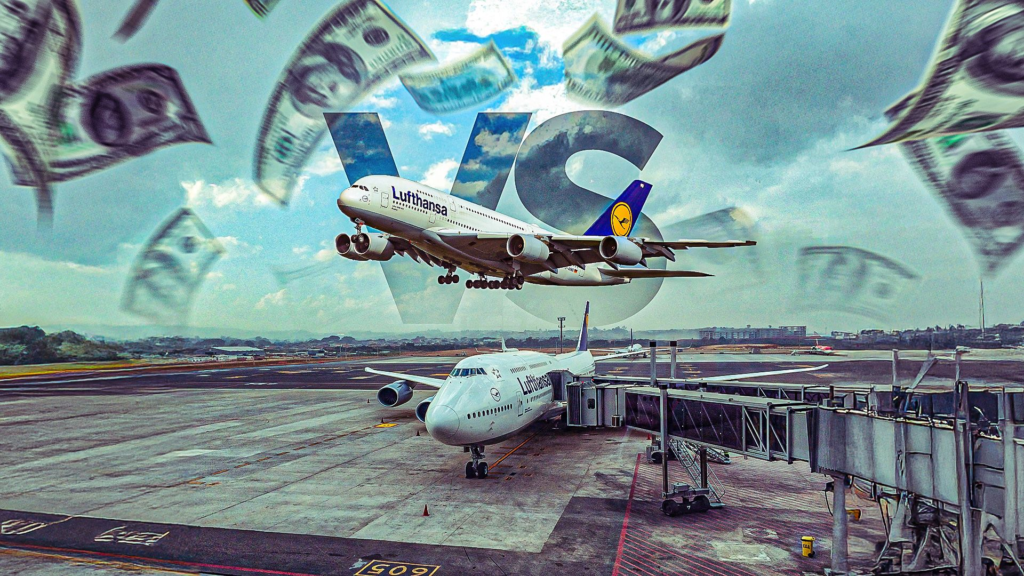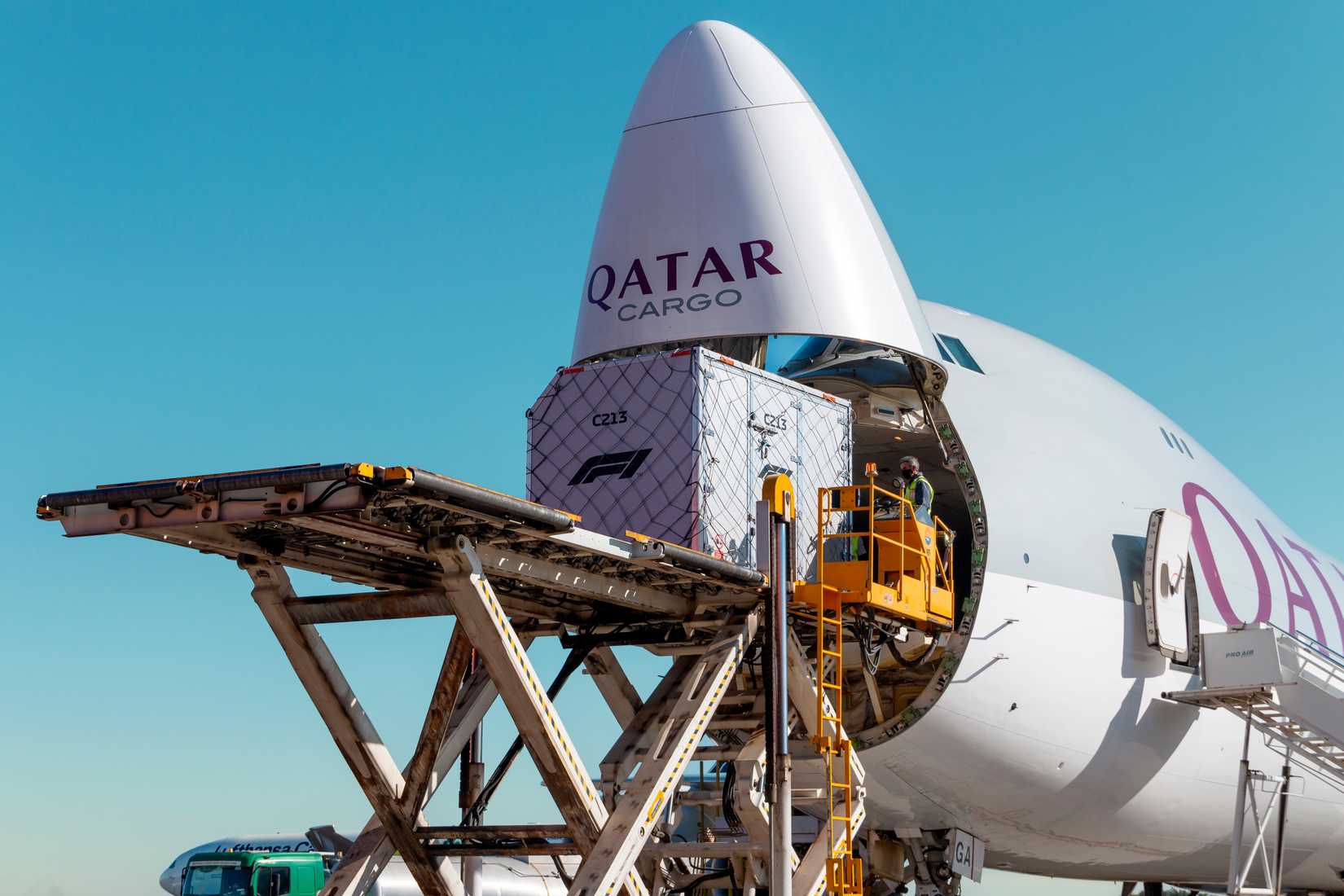The Boeing 747-8i was the final passenger iteration of the famous 747 program, while the Airbus A380 is the largest passenger airplane to ever make it into service. The Boeing 747-8 entered service in 2011, with the last being delivered in 2023. The first A380 entered service in 2007, and the last was delivered in 2021. The production runs of both aircraft were disappointing, and it’s likely neither Airbus nor Boeing recouped the development costs of these massive aircraft.
This makes the two giants contemporaries that directly compete with each other. Which costs more to operate: the Boeing 747-8i or the Airbus A380 Superjumbo? Compared with other aircraft, these are only flying in low numbers, with around 29 Boeing 747-8is in commercial passenger service (some of which are parked) and around 186 Airbus A380s in active service, and some in storage.
Buyer’s Remorse
The Boeing 747-8i was the final passenger variant of the venerable Boeing 747 passenger jet. However, it proved unpopular as a passenger jet. Only 34 commercial passenger examples were sold, with over half of those being purchased by Lufthansa. Most of the Boeing 747-8s sold were freighters. Whereas the 747-8 was an update on what was fundamentally a 1960s aircraft, the Airbus A380 was a clean-sheet aircraft.
But the Airbus A380 only attracted 251 orders, all of which were passenger variants, as no freighter variant was ever produced. In the end, the Boeing 747-8 and Airbus A380 didn’t so much compete with each other as they did with the smaller next-generation twin-engined Boeing 787 Dreamliner and Airbus A350. Airlines that purchased these aircraft soon came to regret it. Air France, Malaysia Airlines, and China Southern retired their A380s by 2022, while others like Lufthansa trimmed their fleets.
Qatar Airways even stated buying the A380 was the biggest mistake it made, although Emirates seems to be an outlier, enamored with them. Most 747-8is remain in service, except Korean Air, which has sold half of its passenger 747-8i fleet to contractor Sierra Nevada Corporation for the United States Air Force. Korean Air wants to retire its 747-8s, A380s, and older 777s, but it cannot, as widebody 787, 777X, and A380 replacements are delayed.
Difficulties In Comparing Costs
Comparing the costs of different aircraft types is incredibly complicated. Answers are influenced by factors like how densely the seating is configured on the aircraft, how long the routes are, the demand on those routes, the ratio of upper-class seats, airport taxes, and much more. For example, Delta Air Lines found it economical to operate a large fleet of Boeing 717s, partly because it already had expertise in operating the related MD-95.
The Airbus A380 benefits from being a much newer clean-sheet design compared with the Boeing 747-8. Updating aircraft is generally not as good as building a clean-sheet design. For example, the upcoming Boeing 777X is coming with a low percentage of lightweight composite materials compared with the A350 and 787. However, these aircraft also don’t come with the overbearing developmental costs of clean-sheet aircraft.
|
Select widebody aircraft |
|
|---|---|
|
Airbus A350 |
1,428 (by July 2025) |
|
Airbus A380 |
251 |
|
Boeing 777X |
551 (by July 2025) |
|
Boeing 787 |
2,661 (by July 2025) |
|
Boeing 747-8 |
155 (34 commercial passenger examples) |
It cost around $25 billion for Airbus to develop the A380, and it was unable to recoup all these costs before the program was terminated. It’s unclear how much it costs to develop the 747-8, but estimates range from $4 billion to over $10 billion. These development costs need to be passed on to the airlines purchasing the aircraft.
The Airbus A380 Has A Lower-Per Seat Burn
On a per-aircraft basis, the 747-8 burns around 20-25% less fuel than the A380, but this is thanks to it being a smaller aircraft of the two, with a max seating of around 605 passengers compared with the Airbus’s 853 max capacity. When operating with high seating, the A380 can burn around 11% less fuel per seat compared with the 747-8. Although this can fall to as low as 5% more efficient per seat, depending on the seating configuration.
Still, the real world is more complicated. When Boeing and Airbus were pitching these aircraft, both manufacturers claimed their aircraft was more efficient than the other’s. In 2010, Leeham News reported, “Boeing claims the 747-8 has double-digit lower costs, to which Airbus indignantly says Boeing–not to put too fine a point on it–is lying. Airbus is unusally blunt on this topic.”
|
Boeing 747-8i |
Airbus A380 |
|
|---|---|---|
|
Typical seating |
467 |
525 |
|
MTOW |
987,000 lbs |
1,268,000 lbs |
|
Range |
7,730 nautical miles |
9,000 nautical miles |
|
Powerplant |
4x GEnx |
4x Engine Alliance GP7270 or RR Trent 700 |
Leeham News reported Emirates (which has long loved the A380) as saying the A380 has 16% lower costs than the 747-8. At the time, Emirates was operating passenger A380s and freighter 747-400s. Meanwhile, Lufthansa, which operated both the A380 and 747-8i, stated the A380 burns “less fuel per 100 passenger kilometers, though the figure is 3% lower on a litre-per-passenger kilometer basis.”
All Is Not What It Seems
According to the information above, the Airbus A380 is a more modern and efficient aircraft than the 747-8 with a lower per-seat fuel burn. All else being equal, that should mean airlines would first opt to divest of their less efficient 747-8is. But all is not equal, and that isn’t what happens. At least three airlines have fully divested of their fleets of A380s, and none have yet fully divested of their 747-8 fleets (although only three airlines ordered it).
Lufthansa and Korean Air purchased both the A380 and 747-8i. Lufthansa purchased 14 A380s and 19 Boeing 747-8is, with the A380s delivered between 2010 and 2015, while the Boeing 747-8is were delivered between 2012 and 2015. When crunch time came in 2020 with the pandemic, Lufthansa decided to shed six (almost half) of its still relatively new A380 fleet.
|
Boeing 747-8i (commercial passenger jets) |
Airbus A380 |
|
|---|---|---|
|
Passenger variants sold (exc. business jets, less to special Air China aircraft) |
34 |
251 |
|
Remaining in active service |
29 |
189 |
|
Number scrapped |
24 |
|
|
Principal operators |
Lufthansa, Korean Air, Air China |
Emirates, British Airways, Singapore, Lufthansa |
However, Lufthansa did not, and has not, retired any of its Boeing 747-8i aircraft, and it still flies eight of its older 747-400s. The Boeing 747 and A380 are not direct equivalents, and they are built with different capabilities. But still, Lufthansa considered it better to retire A380s over 747-8s or even more 747-400s. Something similar was seen with Korean Air, although it had the option of selling, not just scrapping its 747-8is. This highlights how complex it is when comparing the operating costs of different aircraft. The answer may be different for each airline.
The Versatility Of The Boeing 747-8
The Airbus A380 is a one-trick pony; it was never made as a freighter and possibly never will. It is similarly ill-suited to any role other than ferrying passengers around. So if an airline decides it is too expensive to operate, then it’s likely bound for the scrapyard.
As the A380 is out of production, there is a shortage of spare parts, and so airlines need to cannibalize parts of their fleets to keep the rest of them running. By contrast, there is demand for the Boeing 747. The largest single demand for a retiring 747-8i is likely conversion to freighters. There are also special applications for the Boeing 747-8. As stated, Korean Air was able to sell five examples to the US Air Force’s SNC contractor.
|
Non-commercial passenger or freighter applications |
Boeing 747-8i (special use) |
A380 (special use) |
|---|---|---|
|
VIP Aircraft |
9 (foreign governments) |
|
|
Business jet |
1 (Crown Prince Mohammed bin Salman) |
|
|
US Air Force |
2 (VC-25B Air Force One) |
|
|
US Air Force doomsday aircraft |
5 (ex-Korean Air) |
|
|
Chinese government |
2 operated as VIP transports by Air China |
The Qatari Boeing 747-8 ‘donated’ to the United States to be converted as Trump’s Air Force One is another example of the demand for the jet. It’s possible some could be converted as outsized transports, like some 747-400s were converted as Dreamlifters for Boeing. Put another way, an A380 that is too inefficient to operate as a passenger aircraft is likely a deadweight, whereas a 747-8 too expensive to operate as a passenger jet may be repurposed. In Air Force service, those ex-Korean Air 747-8s may continue flying into the 2050s or 2060s.
Safety In Numbers
There is safety in numbers. This is partly why Emirates likes the Airbus A380, because it went all in on the program. It has half of the world’s Superjumbos. This means it has a large base of qualified pilots and maintainers, as well as a large fleet that can be gradually cannibalized for parts. Conversely, most airlines have very small fleets of A380s, making it more difficult to maintain the dedicated training pipeline and logistics needed to maintain those jets.
Over 1,500 Boeing 747s were delivered over the course of the program, and over 400 continue flying today. The aircraft is popular as a freighter, and that helps to logistically support the limited number of passenger variants still in operation. It also likely means there is a greater supply of spare parts for the aircraft.
The bottom line is the A380 is a newer aircraft and likely has a lower seat burn per seat, but the 747-8i is likely to outlive the A380 as a freighter and other special-purpose aircraft. Air France retired its A380s just four years after its 747-400s, while Lufthansa retired six A380s during the pandemic. On the other hand, the A380 has at least one loyal friend. Emirates recently pitched Airbus to put the A380 back into production as a modernized, re-engined Airbus A380neo.








